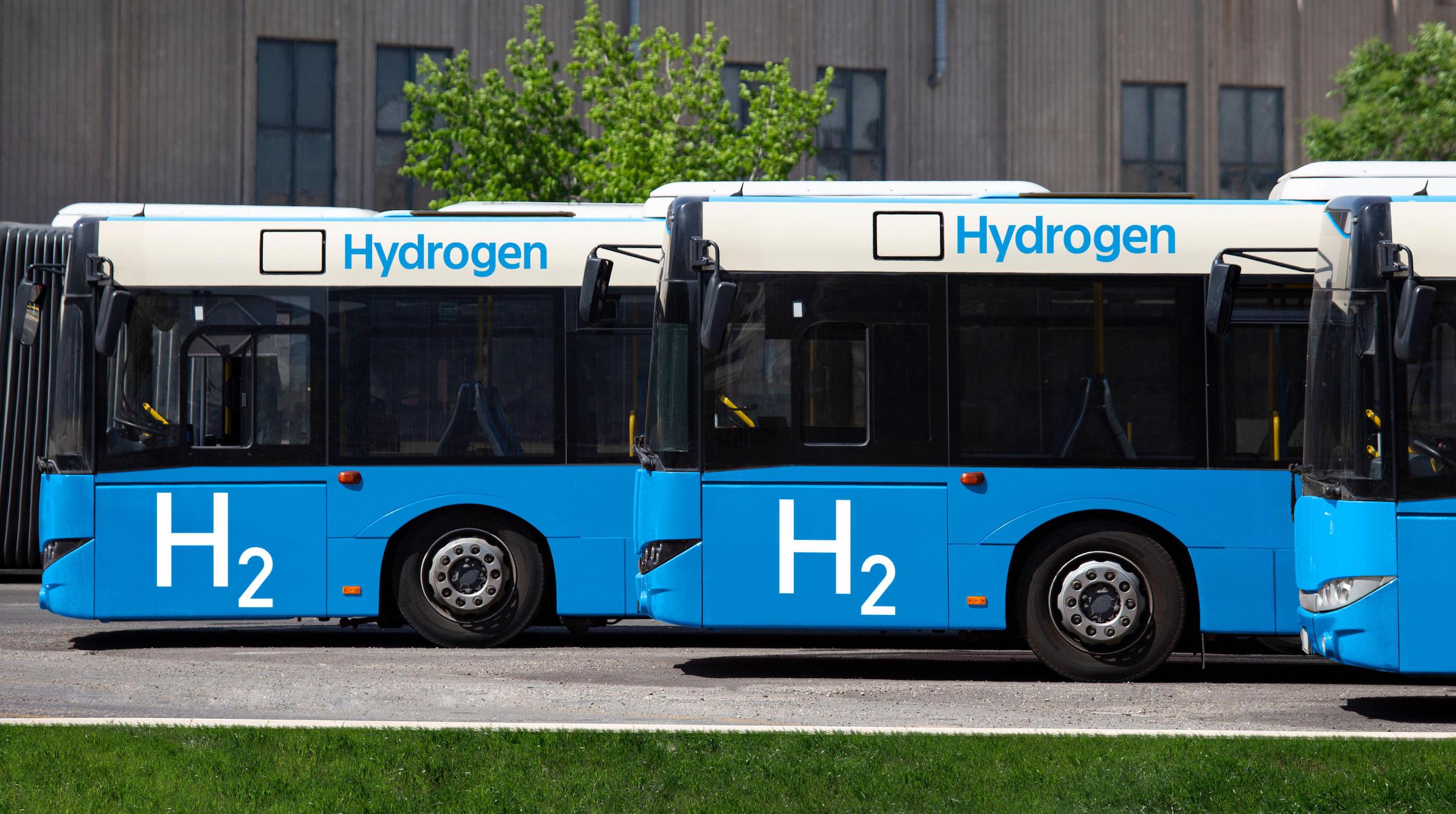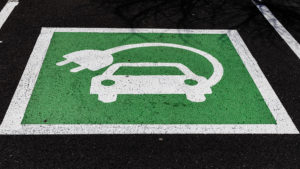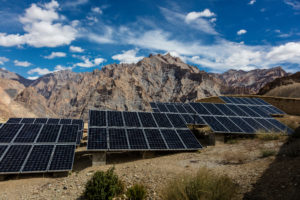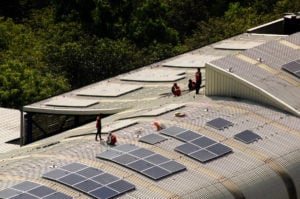Green hydrogen is attracting attention as a potential source of clean energy, and is frequently touted as ‘the fuel of the future’. But what is green hydrogen? What makes it ‘green’? And what are its uses and benefits? Here we explain this promising energy source, as well as its progress and prospects in South Asia.
What is green hydrogen?
Hydrogen gas can be used as a fuel in transportation, power generation and industrial activities. It does not release greenhouse gas emissions such as carbon dioxide when it is burned. Green hydrogen is the name given to hydrogen gas that has been produced using renewable energy, such as wind or solar power, which create no greenhouse gas emissions.
How is hydrogen used as a fuel?
In a fuel cell – a device that converts the energy of a chemical into electricity – hydrogen gas reacts with oxygen to produce electricity and water vapour. Because of hydrogen’s capacity to generate energy without releasing greenhouse emissions, it is a potential clean alternative to fossil fuels.
How is hydrogen produced?
Hydrogen is the most abundant chemical element in the universe. Despite its abundance, hydrogen does not naturally exist as a gas in usable quantities, occurring almost entirely in compounds, such as water. Therefore, hydrogen must be produced using industrial methods. Most of these involve the reforming of natural gas – a fossil fuel. Other methods exist, including a process called electrolysis, whereby an electric current is used to split water into its basic components: hydrogen and oxygen.
What is the difference between green, grey and blue hydrogen?
While hydrogen gas does not emit greenhouse gases when burned, the electricity used to produce it, whether via electrolysis or other processes, may have been generated by fossil fuels. This is commonly known as ‘grey hydrogen’, which currently accounts for 95% of the total production.
Hydrogen produced using electricity generated by burning fossil fuels, such as coal and gas, but paired with carbon capture and storage (CCS) technologies, which trap the carbon emissions released in the process and prevent them from entering the atmosphere, is labelled ‘blue’.
Green hydrogen is obtained through electrolysis powered by renewable electricity, generated through technologies such as solar panels or wind turbines.
Will green hydrogen become a major part of the energy mix?
According to the International Energy Agency (IEA), hydrogen will play an important role in the global energy transition, but it will only be a relatively small piece of the puzzle. The energy watchdog says that in 2020, hydrogen and hydrogen-based fuels accounted for less than 0.1% of the total global energy consumption. This is expected to grow to 10% by 2050, in a scenario in which the world reaches carbon neutrality.
Hydrogen can complement but won’t replace other sources of clean energy such as solar or wind power, which will remain cheaper to produce, and more suited to large-scale production and the electrification of homes and factories.
However, a robust renewable infrastructure can boost the production of green hydrogen at scale, providing the electricity needed to separate water into its basic elements. “Green hydrogen cannot replace renewable power, but production of green hydrogen will be greatly enabled by solar energy,” SSV Ramakumar, director for research and development of the Indian Oil Corporation (IOC), told The Third Pole.
What are the most promising applications of green hydrogen?
Globally, most of the hydrogen produced today is used in the refining and industrial sectors. By the end of the decade, the IEA anticipates that hydrogen will find a host of new applications, including powering grids and fuelling the building and transportation sectors.
Today, a smaller proportion of the total hydrogen produced is used to make ammonia for the fertiliser industry or as a shipping fuel. It also has applications in the steel industry. If the coal and coke that today power most blast furnaces could be replaced with green hydrogen, a sizeable amount of the sector’s emissions could be avoided.
In developing countries such as India, which is investing in the National Hydrogen Mission to help achieve its energy transition goals, hydrogen could be used in transportation, power generation and industry. Greening its production would also reduce the amount of fossil fuels the country currently uses to produce grey hydrogen, such as natural gas or naphtha.
What are the advantages of green hydrogen technologies compared with other renewables?
Renewable technologies, such as solar, wind or hydropower, are used primarily to generate electricity, which is just one element of a society’s energy consumption. While electricity may account for a large proportion of all energy usage, and can be replaced with renewable energy relatively easily, other sectors such as long-haul transportation or heavy industries still use coal, natural gas or petroleum. These are the main energy sources that could be displaced by hydrogen.
According to the IEA, hydrogen can also be used in batteries. Fuel cells could, if developed at a larger scale, help countries set up infrastructure that can store and stabilise the supply of renewable energy, which fluctuates depending on environmental conditions such as wind speed or solar radiation.
How expensive is it to produce green hydrogen?
The cost of green hydrogen, according the IEA’s Global Hydrogen Review 2021, currently ranges between USD 3 and USD 8 per kilogramme. This is not competitive with grey hydrogen, which costs between USD 0.5 and USD 1.7 per kg to produce. This price difference, the agency says, is currently a major barrier to more widespread adoption of green hydrogen, but it expects this gap will be reduced over time with falling renewable energy prices. Several countries are targeting a cost of USD 1 per kg by 2030, which will make it nearly cost-competitive with fossil fuels, Deepak Yadav of the Council on Energy, Environment and Water (CEEW), a Delhi-based think tank, told The Third Pole.
Pashupathy Gopalan is a director at renewable energy startup Ohmium, which is working on green hydrogen in India. He believes that the fuel will become more cost-effective as the industry grows, but policies are required to enable this.
What is the state of green hydrogen development in India, Pakistan and the rest of South Asia?
Pakistan currently has plans to build green hydrogen capacity with an output of 150 tonnes per day, Deepak Yadav of CEEW told The Third Pole. Green hydrogen pilots are also underway in Bangladesh and Sri Lanka. However, according to Yadav, India is expected to be the major producer of green hydrogen in South Asia.
In August 2021, India’s prime minister Narendra Modi launched the National Hydrogen Mission. This set a target to produce around 1 million tonnes of green hydrogen per year by 2030. Under the plan, the government is expected to launch a production-linked incentive scheme for electrolyser manufacturing and financial aid for research and development, the IOC’s SSV Ramakumar told The Third Pole.
He added: “The intermediate target is that by 2030, we will be reducing greenhouse gas emissions by 1 billion tonnes of CO2, from the current level. If this is to happen, then, hydrogen is a major enabler to place India on the green path.”
What do developing countries need from industrialised nations to promote green hydrogen?
As is the case with many transformative technologies in their early stages, developing countries need finance and knowledge transfer to develop their hydrogen infrastructure, Deepak Yadav of the Council on Energy, Environment and Water (CEEW), a Delhi-based think tank, told The Third Pole. His organisation estimates that India has a total investment potential of USD 44 billion within the next decade. But, he added, it is also vital that wealthy countries provide access to low-cost finance to reduce the transition cost for developing countries.
Yadav added that manufacturers in India are collaborating with technology providers in developed countries to produce electrolysers – a key tool for hydrogen production – on a large scale. The CEEW also suggests that developed countries, especially those that do not have land for huge renewable energy systems, should also be open to importing green fuels and technologies produced in developing countries.









